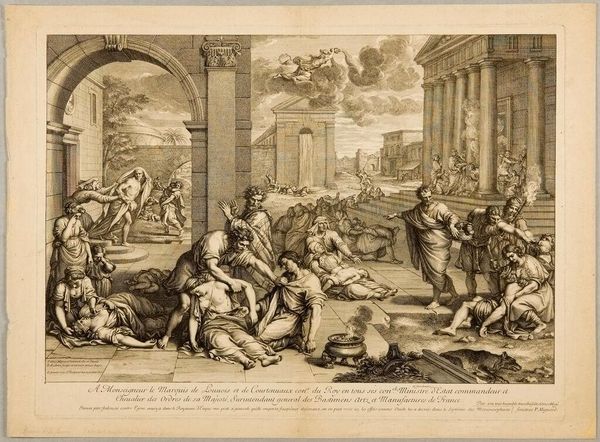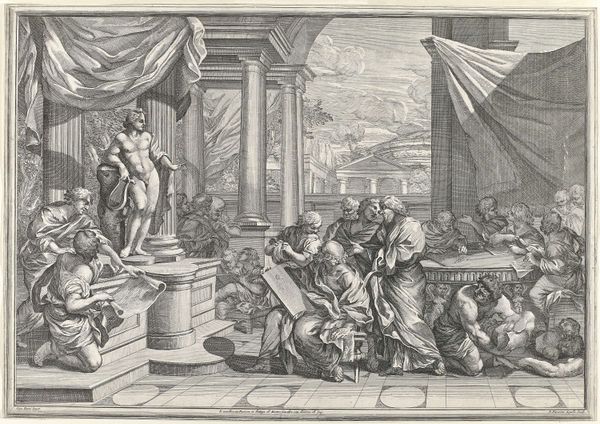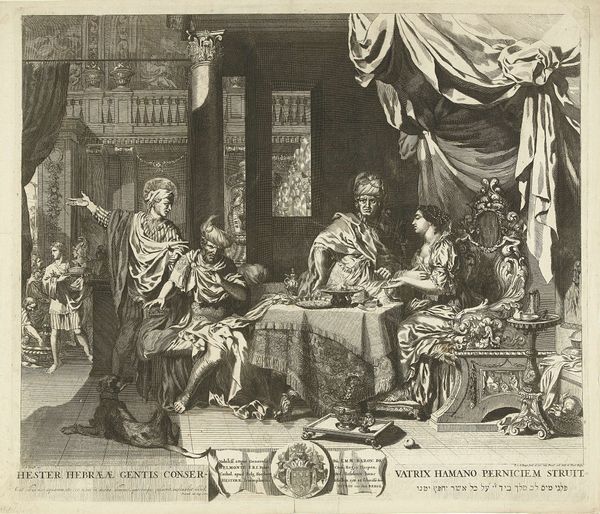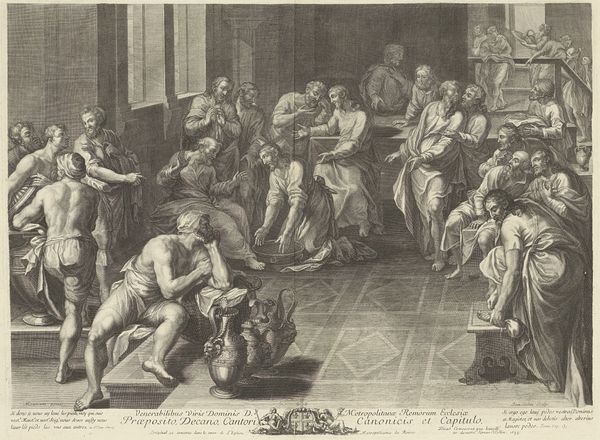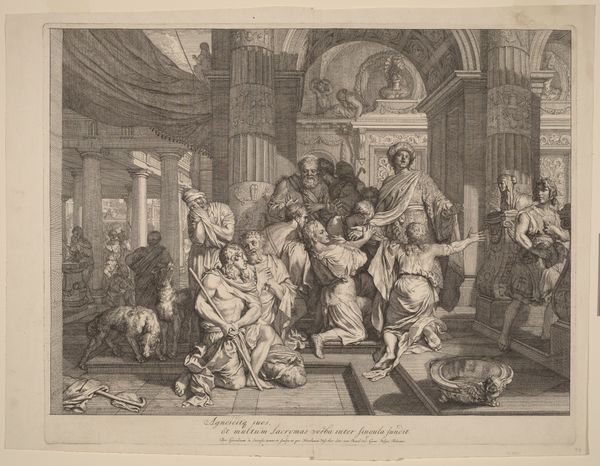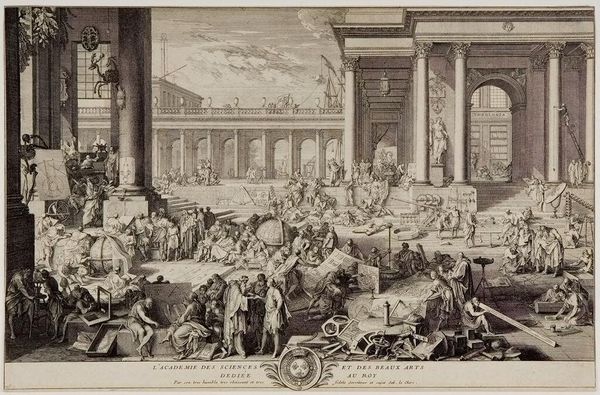
Copyright: CC0 1.0
Curator: This is Jean Pesne's "Penance," created around the late 17th century. It seems to depict a lavish gathering. My first impression is of ritual and deference, but with an underlying tension. Editor: It certainly evokes a sense of ceremony, doesn't it? Consider the cultural context of repentance in that era. What power dynamics are at play here? Is it about genuine remorse or performative piety for social capital? Curator: Exactly. And look at the figures themselves. Some are reclining in luxury, while others are in postures of servitude. The woman washing the feet, the kneeling attendant...these are highly gendered roles, reinforcing societal hierarchies. Editor: The foot-washing is an important visual symbol! It's been a recurring motif for centuries, symbolizing humility and forgiveness. Though it certainly holds religious significance in many cultures, it also represents cultural memory and continuity through visual symbols. Curator: Perhaps this work attempts to reconcile the religious with the societal, showcasing penance as a means of maintaining order and reinforcing power. It's a complex statement, isn't it? Editor: Yes, it is. Thinking about the visual language, it's remarkable how Pesne uses imagery and the symbolic act to create such layered meaning.
Comments
No comments
Be the first to comment and join the conversation on the ultimate creative platform.
